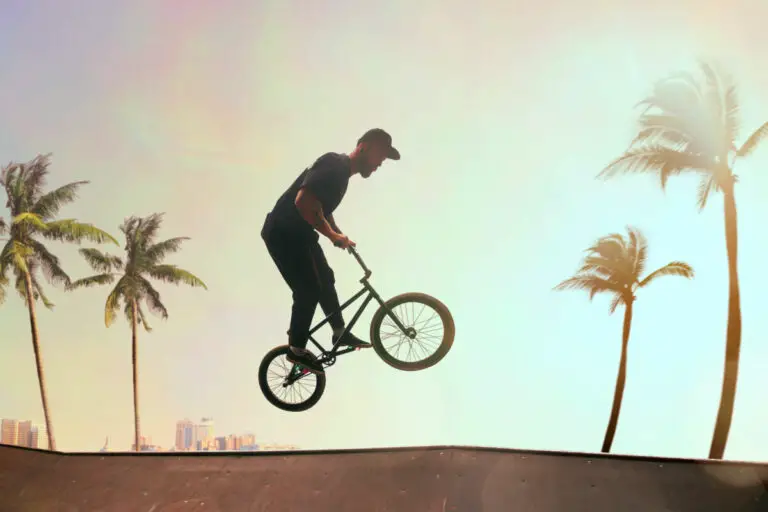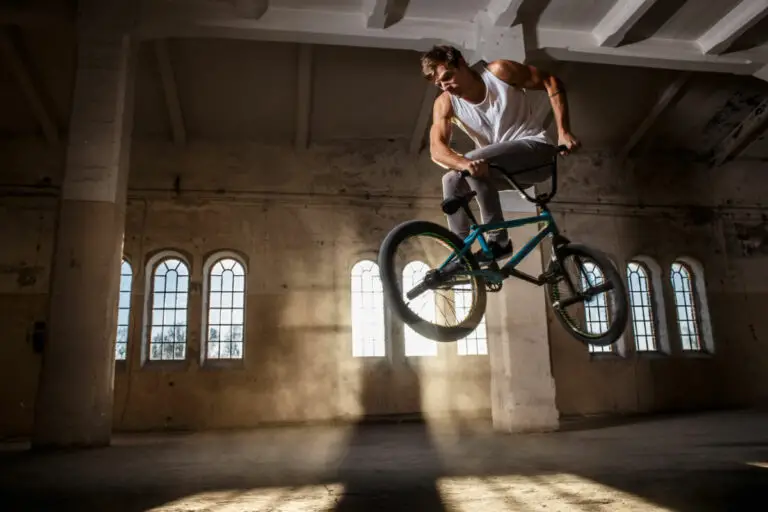Do BMX Bikes Have Gears?
BMX bikes are designed for maneuverability, strength, and speed to meet the demands of BMX racing, tricks, and freestyle riding. With these specialized needs, BMX bikes differ from traditional bicycles when it comes to gears. So do BMX bikes have gears and if so, how many? Let’s take a detailed look.
The Origins of Gearless BMX Bikes
- Early BMX bikes descended from stripped-down Schwinn Sting-Ray bikes used for racing in the 1970s.
- To save weight, the single-speed coaster brakes were removed, creating the first gearless BMX bikes.
- These simple lightweight bikes with only a back pedal brake became the template for modern BMX designs.
Key Takeaway
The very first BMX bikes originated by modifying single-speed coaster brake bikes to create simple, gearless designs focused on lightweight over gears.
Advantages of Gearless BMX Bikes
- Riding a fixed-gear BMX bike develops strength and pedaling efficiency.
- Less components also mean reduced bike weight for maneuverability.
- No gears allow for simple, low-maintenance bikes.
- Gearless bikes enable quick back pedal braking using leg power vs hand brakes.
- A fixed direct-drive design provides consistent power transfer and acceleration.
Key Takeaway
Early BMX riders discovered distinct advantages to removing gears including lightweight, simplicity, strength building, and efficient power transfer.
Modern BMX Bikes – Single Speed is Still Common
- Many BMX bikes today maintain the classic single-speed gearless design:
- Race bikes for rapid acceleration
- Dirt jumpers for weight savings
- Kids’ BMX bikes for simplicity
- However, multiple gears have become more common on modern BMX bikes to provide more versatility.
Key Takeaway
While fixed single-speed BMX bikes are still popular today, many riders opt for bikes with multiple gears to accommodate different riding conditions.
Number of Gears on Geared BMX Bikes
- Many freestyle and jump BMX bikes add 2-3 gears with a rear cassette and front chainrings. This offers basic gear range.
- Racing BMX cruisers designed for taller teens and adults also normally have 5-7 gears to achieve higher speeds.
- High-end BMX bikes meant for trail, urban or flatland riding may have up to 9 gears for greater flexibility.
- Popular options are 3/32T, 7/28T or 9/36T gearing, indicating the number of gears and teeth ratios.
Key Takeaway
BMX bikes with multiple gears often have 2-3 for casual use, 5-7 for race cruisers, and sometimes up to 9 gears on high-performance models to optimize pedaling cadence for all conditions.
How Gear Shifters Work on BMX Bikes
- Most geared BMX bikes utilize a rear derailleur and cassette to change between cog sizes on the back wheel.
- Twist grip or trigger thumb shifters mounted on the handlebars are used to operate the derailleur and select gears.
- Higher-end BMX bikes may add a front derailleur and chainrings for even more gearing options.
Key Takeaway
Gear changes on geared BMX bikes are made using shifters that activate a rear derailleur mechanism to move the chain across different rear cassette cogs. Front derailleurs may add more gears.
Single Speed vs. Geared – Making the Choice
Consider these factors when choosing single-speed or geared BMX bikes:
- Riding Type – Racers often still prefer single-speed. Freestyle, street, and trail riders gravitate toward multiple gears.
- Terrain – Gearless is fine for smooth dirt tracks and skateparks. Gears help on hilly streets and bumpy trails.
- Age/Skill – Kids and novice riders may favor single speed simplicity. Advanced riders utilize more gearing options.
Key Takeaway
Evaluate your planned riding style, local terrain and the rider’s age and skill level when deciding between a single speed vs geared BMX bike. Choose the option suited to your needs and conditions.
Maintaining a Geared BMX Bike
- Periodically inspect the derailleurs, shifters and gear cables for damage. Replace any worn parts.
- Keep the drivetrain clean and lubricate the chain frequently.
- Make sure the rear derailleur is adjusted properly so shifting is quick and smooth between gears.
- Adjust cable tension if shifts become sluggish or miss gears when riding.
Key Takeaway
Geared BMX bikes require regular drivetrain maintenance and tuning for optimal shifting performance. Follow the manufacturer’s recommendations.
So in summary, while early BMX bikes were only single-speed, today’s options include geared models to suit different riding needs. Consider terrain, riding style, and skill level when choosing the best gearing setup. Maintain geared BMX bikes properly so every ride is smooth regardless of the number of gears.


